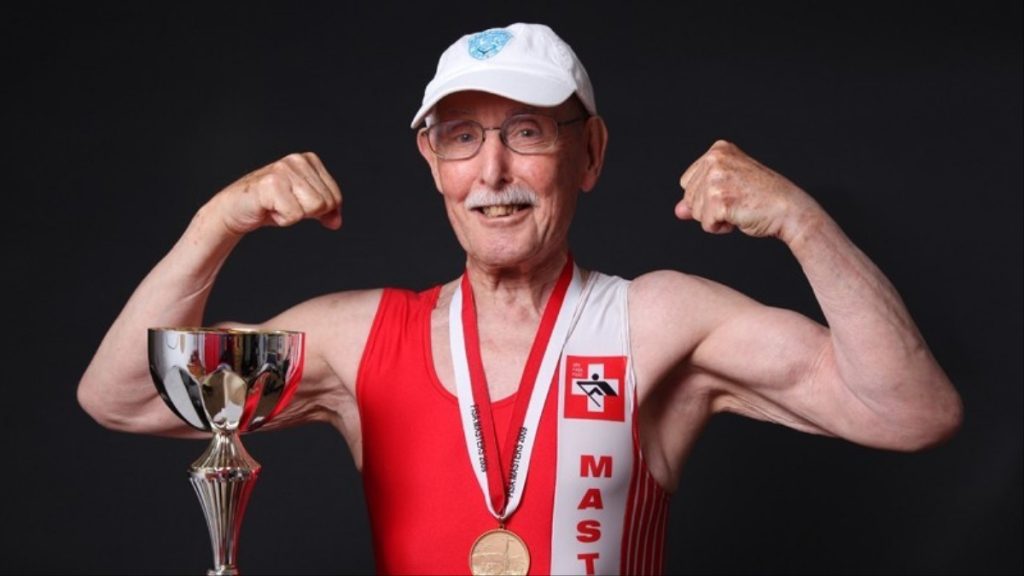I hear a lot of patients who attribute their aches and pains to the aging process. Maybe you helped with DIY projects over the weekend and now have an aching back, or tried jogging and now your knees are sore. It’s common to abandon the activity and accept that you’re no longer in your twenties. What if we told you we have the secret to staying young? The answer is not in vitamin jars, fad diet books or winning the lottery. It’s actually how well and often you move.
There are two types of ageing, primary ageing and secondary ageing. Primary aging is the inevitable changes in your muscles due to time. Secondary ageing is what you can control. Secondary ageing is illnesses, diseases and health conditions which impact your body but can be prevented through your chosen lifestyle. Secondary ageing is why you may age well or poorly, both physically and mentally. The above image is of Charles Eugster, a 96-year-old British sprinter who holds the world record for the 200m outdoor sprint. Charles has defied the ageing process and continues to wakeboard, write and speak publicly in his late nineties. Let’s explore the science behind staying physically and mentally fit.
Physical Fitness
From thirty years old your muscle mass starts to reduce, this decline starts slowly but accelerates to losing 2-4% of muscle mass per year when you reach fifty years old. This muscle decline is greater in your legs compared to your arms and torso. The fat within the muscle increases in proportion, and the blood vessels supplying the muscles become less abundant. We then see less oxygen, hormones and nutrients entering the muscles. This was once considered primary ageing, we believed you got weaker as you got older, and therefore it was probably a good idea if you stopped jogging at 65.
But now we know that older people respond to exercise in similar ways to younger people. Resistance exercise has now been proven to reduce the amount of fatty filtration in ageing muscles and increase the growth of blood vessels to the muscle. Ageing muscles retain their capacity to regrow and adapt to load. Reduced muscle mass is no longer considered a normal ageing process, but rather is due to the reduction in exercise that usually coincides with people getting older.
Mental Fitness
Physical ageing is easier to see, but mental ageing is just as prominent. Starting from your thirties, the human brain shows signs of structural decline. The areas of your brain which allow you to focus, remember and switch between tasks start to shrink. We used to think reduced brain size was a sign of primary ageing, an inevitable process. But recent research has shown that we can stop the shrinking, in fact we can grow it back. A research study tested this theory, they had a group of people in their sixties, half of which did yoga for 6 months and the other did aerobic activity three times per week. It was no surprise that the aerobic group’s lungs and heart were healthier after six months, but what was surprising was the size of their brains! The participants who completed the aerobic program showed an increase in brain volume and had reduced their risk of cognitive decline by 42%. The aerobic group saw growth in the areas of the brain where diseases such as Alzeimer’s dementia stem from. If you want to keep your mind healthy, simple aerobic exercise will reduce tissue loss in your brain.
What does this all mean? If you’re fearful of exercising because of your age, it is probably doing more damage to not exercise than to try it. More research is endorsing the idea that we can reverse the ageing process through exercise. If you’re new to exercise and want to feel young again in 2021, book in for a gym rehabilitation session with our Physiotherapists.
Ilana Viskovich
Physiotherapist

